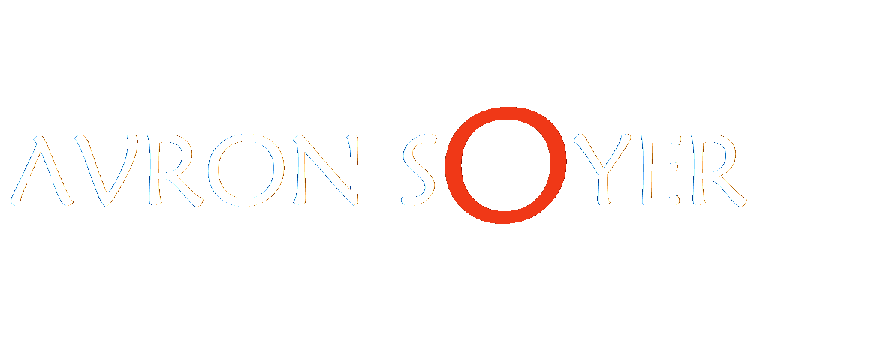Interview with a Student 2000
-Avron Soyer
Avron: I am aware of the danger of identifying the potentialities of art with any particular approach. I am on the side of open creative dialogue between person and discipline.
I want to accept and encourage. Yet I also want to help students move closer to art. Thus I cannot uncritically accept everything they draw and paint. This is a basic tension in which I work. …I don’t know whether this comes through.
Student: Yes, yes. This is your style…I felt that I could do what I wanted but that I had to follow the rules.
Avron: Not from my point of view rules.… Art has standards and techniques, but they are predominantly orientations and sensitivities and only secondarily, peripherally, rules.
A young artist recently told me that she is tired of the rules that art teachers insist are essential to art. If one has been in contact with many such teachers one finds their rules contradictory. One says, “You shouldn’t draw. You should construct paintings by juxtaposing areas.” Another says, “Draw the figure in charcoal before painting.” Some insist on detailed “underpainting.” Others demand thick bravura direct paint application. Some insist, “Put in the darks first;” others say, “First do the lights.”
It’s worse than this. I’ve seen student exhibitions in which everyone painted like the teacher. I said in class today that it is fine for everyone to paint like the teacher under one condition. They have to look exactly like the teacher… A whole class of fat old Caucasian men with curly white hair painting the same way is fine. (Well…actually…my own work is quite diverse…I’m thinking of titling my next exhibition “Avron Soyer, A Group Show.”)
My teaching has been influenced by acting…. Actors take for granted that their unique humanity is their instrument, and thus that “technique” is primarily the discovery, opening and education of sensitivity.… The teaching of painting has not yet had it’s Stanislavskian revolution. Sensitive practice exists, but its insights are not publicly articulated. In the absence of theoretical self-knowledge, arbitrary rules and the teacher’s own idiosyncratic way of painting are often confused with disciplinary necessities.
It is crucial to distinguish standards and techniques applicable to a tradition (e.g., Chinese, Indian or “Western” canons) or a style (e.g., neoclassicism, spontaneous ink play, abstract expressionism, fauvism) from those required by all painting, and/or all art.
All painters should, for example, learn sensitivity to the expressive qualities of line, shape, texture and color [e.g., to the interplay of “sharp” with vague ambiguous areas (as a ship emerges out of fog) and to cool and warm colors (as in Picasso’s blue and pink periods)]. They should learn to draw the “figure” (e.g., person, tree, flower) as an “organic unity” and to explore the relationship between focal image and “background.” They should learn to compose expressively and coherently in space.
To become an artist in any medium one should learn open and sensitive dialogue between spontaneity and tradition, between theory and practice, and perhaps most fundamentally, between inwardness, medium and “creative process.”
Student: How do you understand the difference between your work as an artist and as an art teacher?
Avron: As an artist I try to create the most vital, personal, intense, articulate original images I can. As a teacher I am here in support of you. Your achievement as artists is my fulfillment as a teacher.
Student: How does one know when to leave a painting alone? You always warn against overwork.
Avron: We change. The world changes around us, light and mood. A painting should seize a vital intense image from the flow.
You may begin a painting in summer. You are happy. Full of life. Perhaps newly in love. You may return to it in winter. Lonely…The mind can shift from summer to winter in a moment.
In overwork one weakly compromises incompatible visions that could have inspired fine distinct paintings.
Excerpt form “Living Art” -Avron Soyer


